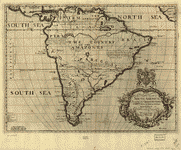
 Dickinson had a remarkable ability to make haunting abstractions out of the concrete, specific materials around her-- to detach herself from the confines of her immediate surroundings and project them onto wider realms of thought. Her astonishing imagination allows her to "dwell in Possibility / A fairer house than Prose." She conceives of "Possibility" and imagination, however, not only in terms of domestic spaces like the home but as exotic realms as well. Suzanne Juhasz, a noted Dickinson critic, writes of this ability: "The mind, conceived of spatially, has properties other than that of enclosure. Its area and circumference are not fixed but, rather, changeable in dimension. The mind can expand, can grow wider and wider, under the demands of experience. To depict her sense of this kind of development, Dickinson frequently uses not an architectural but a geographical vocabulary" [Juhasz 20]. Dickinson had a remarkable ability to make haunting abstractions out of the concrete, specific materials around her-- to detach herself from the confines of her immediate surroundings and project them onto wider realms of thought. Her astonishing imagination allows her to "dwell in Possibility / A fairer house than Prose." She conceives of "Possibility" and imagination, however, not only in terms of domestic spaces like the home but as exotic realms as well. Suzanne Juhasz, a noted Dickinson critic, writes of this ability: "The mind, conceived of spatially, has properties other than that of enclosure. Its area and circumference are not fixed but, rather, changeable in dimension. The mind can expand, can grow wider and wider, under the demands of experience. To depict her sense of this kind of development, Dickinson frequently uses not an architectural but a geographical vocabulary" [Juhasz 20].
These geographical tropes, as we've seen, take a number of different forms: she uses familiar natural features, such as oceans and mountains, heavily in her poems. Geography also gives her a way to think about individual persons as "worlds" unto themselves. In this poem, geographical metaphors offer a way to discuss interior reality as a function of its relationship to an exterior one. The "truths' of interior and exterior could apply equally well to a landsape or a consciousness
The Outer- from the Inner
Derives its Magnitude-
'Tis Duke, or Dwarf, according
As is the Central Mood-
The fine-unwavering Axis
That regulates the Wheel-
Though Spokes-spin-more conspicuous
And fling a dust-the while.
The Inner- paints the Outer-
The Brush without the Hand-
Its Picture publishes-precise-
As is the inner Brand-
On fine- Arterial Canvas-
A Cheek- perchance a Brow-
The Star's whole Secret- in the Lake-
Eyes were not meant to know. [451]
 
|